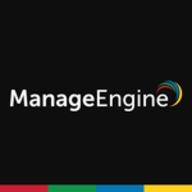


ManageEngine Endpoint Central and NinjaOne compete in the endpoint management and automation category. ManageEngine Endpoint Central has the upper hand with more comprehensive features and robust integration capabilities compared to NinjaOne.
Features: ManageEngine Endpoint Central offers comprehensive patch management, integration with Active Directory for automated security policy enforcement, and robust asset management capabilities. It also provides extensive remote support and script deployment. NinjaOne provides simple remote management and automation scripts, allowing for quick deployment. It supports device monitoring effectively and utilizes policies for configuration tasks.
Room for Improvement: ManageEngine Endpoint Central could improve in technical support availability, integration with third-party applications, and streamline its SaaS offerings. It may also enhance patch management for Linux and offer better MDM capabilities. NinjaOne needs to enhance reporting, ticketing, and the user interface, along with better support for third-party software patching.
Ease of Deployment and Customer Service: ManageEngine Endpoint Central supports mainly on-premises and hybrid cloud setups, offering solid technical support though occasionally inconsistent. NinjaOne provides excellent cloud compatibility, offering robust public cloud solutions with generally satisfactory support, but users show a need for broader availability.
Pricing and ROI: ManageEngine Endpoint Central presents a competitive price point with flexible licensing, although it may incur additional costs for specific features and perceived as pricey in some setups. It delivers solid ROI by reducing deployment time and manual intervention. NinjaOne offers affordable solutions and flexibility in scaling, reported as cost-effective by users. Both solutions show notable ROI through enhanced automation and streamlined processes.
Everything we've gained from it makes my job easier day after day, and I see value in it as an engineer.
Microsoft Intune not only saves costs by reducing the number of personnel needed but also offers a comprehensive solution for managing laptops, applications, security, individual access, and enrollment.
Importantly, when someone leaves the company, it helps protect document access on their devices.
NinjaOne enables significant time savings, reducing my workload by 40% to 50%, primarily due to remote management capabilities.
When a support ticket is submitted, it directly reaches someone with Intune support expertise.
When I contacted Microsoft, they had the same expertise, if not more, which is phenomenal because I felt heard and my problem was solved.
Sometimes, the support provided is excellent, and the representative is knowledgeable, while other times, the service needs improvement.
The support team is available via chat and will create a ticket if they're not available, providing assistance even for small issues.
While they are generally good, there could be improvements in their response times to align with our SLAs.
Our experience with escalation supports, including auto escalation to third-level or engineering support, has been very positive.
The customer support at NinjaOne is excellent, rated ten out of ten.
I rate customer service and support for NinjaOne at seven out of ten due to slow response times.
The scalability of Microsoft Intune is ten out of ten.
Ideally, we want to automatically segregate devices based on user properties like primary use, but currently, dynamic groups seem limited to device properties.
It supports organizations with 200 endpoints and those with more than 15,000 endpoints.
I would rate the scalability of NinjaOne as ten out of ten.
The design suggests it is scalable.
We have not experienced downtime, bugs, or glitches.
It appears Microsoft Intune undergoes changes without informing customers.
Microsoft Intune has been very stable.
ManageEngine prefers not to display any information if it cannot be properly gathered.
The product is very stable, especially with the cloud version.
We haven't encountered issues very frequently.
I would rate the stability a ten out of ten.
Features like unlocking devices sometimes fail, and the support offered for other operating systems is insufficient.
There are communication issues, so you might start working with a feature without knowing if it will be deprecated six months from now.
Many third-party companies offer single-pane-of-glass reporting that shows you what your update environment looks like, how your patch is doing, application status, etc., but Intune's reporting is not intuitive.
It would be great if there was a smarter solution to address this issue.
Endpoint Central does not support Linux, which makes it challenging to patch Linux machines using commands.
The patch management module could be simplified as it is currently a bit complicated.
Security and reporting, including business intelligence tools, are adequate.
The inclusion of XENServer and Proxmox as virtual platforms in NinjaOne is currently missing.
The network monitoring needs to be improved.
Introductory professional services, like a fast-track service, were included with our E5 membership, and there have been no additional costs.
The Intune suite and add-ons, such as batch management and remote help, are costly.
It costs approximately forty euros per user per month.
ManageEngine products offer reasonable prices for their product quality.
The pricing is cheaper compared to other MDM products.
The pricing of ManageEngine Endpoint Central is quite decent.
The pricing for NinjaOne is appropriate for small companies.
NinjaOne is reasonably priced, particularly with the inclusion of TeamViewer, SentinelOne, and Bitdefender.
The price or licensing of NinjaOne is a little bit high.
Intune excels in configuration and compliance management for Windows 10, ensuring devices receive timely updates and adhere to organizational standards.
Dynamic groups allow us to set conditions for automatic membership, eliminating the need for user intervention or manual review and ensuring a seamless workflow.
Windows Autopatch is the most valuable because it removes the burden of patch management.
ManageEngine Endpoint Central is straightforward to use and implement.
ManageEngine Endpoint Central has significantly simplified my device management practices.
The GUI of Endpoint Central is very user-friendly, which simplifies the process of training new users.
The software's automation tools have solved critical deployment problems for small businesses.
A significant feature of NinjaOne is its remote access capability, which is essential for my clients’ home office usage.
Every month, every quarter, I see new features, and it is always evolving.
| Product | Market Share (%) |
|---|---|
| Microsoft Intune | 32.6% |
| ManageEngine Endpoint Central | 10.7% |
| NinjaOne | 4.9% |
| Other | 51.800000000000004% |



| Company Size | Count |
|---|---|
| Small Business | 116 |
| Midsize Enterprise | 46 |
| Large Enterprise | 152 |
| Company Size | Count |
|---|---|
| Small Business | 25 |
| Midsize Enterprise | 14 |
| Large Enterprise | 35 |
| Company Size | Count |
|---|---|
| Small Business | 16 |
| Midsize Enterprise | 2 |
| Large Enterprise | 1 |
Microsoft Intune provides centralized management of mobile devices and applications, ensuring security, compliance, and productivity through integration with Microsoft services like Microsoft 365 and Azure Active Directory.
Organizations use Intune for managing mobile devices and applications, enhancing security and compliance across platforms. With features like single sign-on, conditional access, and zero-touch deployment via Autopilot, it facilitates efficient operations. Intune's scalability, easy enrollment, and capabilities such as remote wipe support diverse device management, offering robust data protection and efficient operation. Despite its features, improvement areas include reporting, compatibility with non-Microsoft devices, and better support for macOS and Linux devices.
What are the key features of Microsoft Intune?
What benefits should users look for in reviews?
In industries such as finance, healthcare, and education, Microsoft Intune is implemented to ensure secure and compliant device management. Companies leverage its capabilities to deploy security policies and manage both corporate-owned and BYOD environments, facilitating a unified approach to data protection and compliance.
ManageEngine Endpoint Central is a unified endpoint management (UEM) solution offered by ManageEngine, a division of Zoho Corporation. It is designed to help organizations efficiently manage and secure their endpoints from a centralized platform. Endpoint Central provides a comprehensive set of features and capabilities to streamline endpoint management and enhance security across diverse devices and operating systems.
ManageEngine Endpoint Central Features:
ManageEngine Endpoint Central Benefits:
Reviews from Real Users
PeerSpot user, Sr Engineer Administrator at a university, says that "Its cross-platform capabilities and the ability to do both OS-level patching and third-party patching are valuable. It is difficult to find a software product that will do all that for you out of the box, and you don't have to do any configuration other than your initial setup. Once you do that, there is a very minimalistic approach to getting it operational. You can have it up and running within a 20-minute time span."
Park Armstrong, Chief Technical and Solution Architect at Vertigo Inc., writes that ManageEngine Endpoint Central is “Helpful for identifying and filling the gaps and meeting compliance needs, but each of their product works as an independent product and lacks integration”.
NinjaOne provides comprehensive remote monitoring, troubleshooting, and automation via a user-friendly web interface. With a robust mobile app and integration capabilities, it appeals to small businesses seeking cost-effective management solutions.
NinjaOne is designed to streamline IT operations through its remote monitoring, patch management, and automation capabilities. Its integration with Bitdefender and ongoing feature enhancements are valuable, although users express a desire for more third-party compatibility and smoother deployment processes. The platform's SLA system enhances performance tracking, while its continual development is a key attraction. Despite some calls for a more intuitive graphical interface and advanced reporting features, it remains an asset for managed service providers and businesses adapting to cloud-based environments.
What are the most important features?NinjaOne is widely employed across different sectors for server and workstation management, network infrastructure oversight, and client computer support. With its cloud-based framework, it supports managed service providers and businesses shifting to the cloud, ensuring seamless software deployment and improved asset management, making it integral to modern IT environments.
We monitor all Unified Endpoint Management (UEM) reviews to prevent fraudulent reviews and keep review quality high. We do not post reviews by company employees or direct competitors. We validate each review for authenticity via cross-reference with LinkedIn, and personal follow-up with the reviewer when necessary.